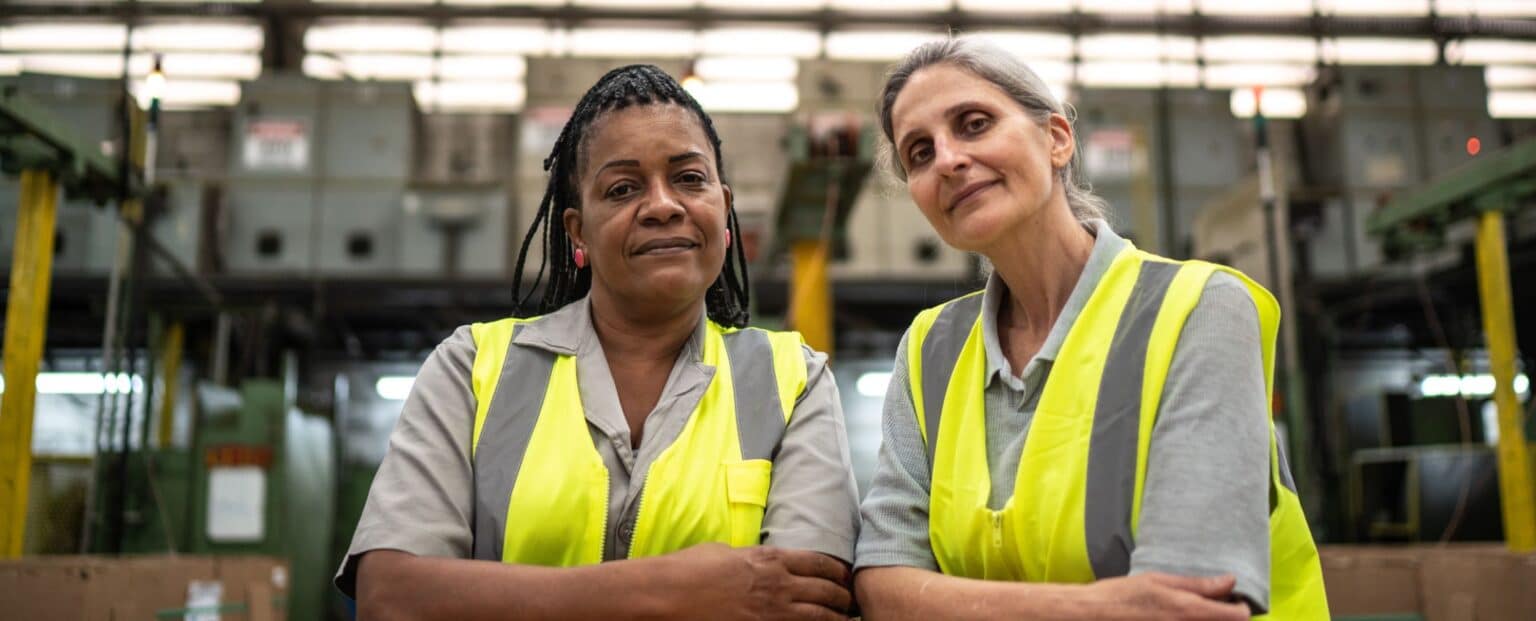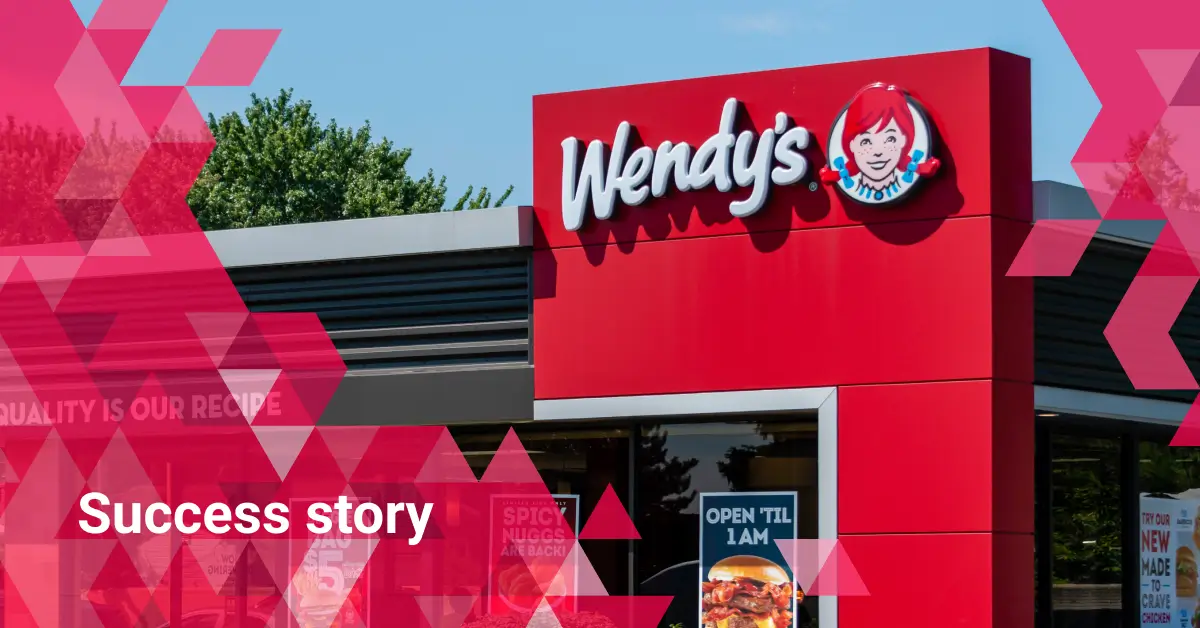Boost Brand Awareness 10x With An Employee Advocacy Platform

Table of contents
- What Is Employee Advocacy?
- How to Build Employee Advocacy In Your Company
- Benefits of Employee Advocacy
- Are Employee Advocacy and Employee Engagement the Same Thing?
- Employee Advocacy Depends on Employee Engagement
- What Is an Employee Advocacy Platform?
- 5 Employee Advocacy Best Practices You Need To Know
- Two Examples of Employee Advocacy Done Right
- 5 Steps to Kick Off An Employee Advocacy Program In Your Company
- 10 Tips for Improving Employee Advocacy
What can be better for a company than its own staff publicly singing its praises? An organization couldn’t ask for better PR. Companies should harness that organic marketing potential and turn it into a competitive advantage with a dedicated strategy with an employee advocacy platform.
But how do you get your employees to talk about your company online? How can you create content they’ll want to share? Isn’t it just better to place some ads on Facebook and hope people will notice them? (Spoiler alert: Nope!)
The modern internet usage and social media outlets have created the perfect opportunity for companies to build brand awareness with a marketing team they didn’t know they had. 500 million people have their eyes on Instagram every single day. That’s a big (and free) audience. With the right content, high-performing hashtags, and employees eager to share the love, you can build an incredible employee advocacy program.
First, let’s start with the basics.
What Is Employee Advocacy?
The most straightforward employee advocacy definition is this—the promotion of a company by its own employees. Whether they’re raving about their job or plugging a product, employees saying good things about their employer can do wonders for a company’s reputation and social capital, not to mention the bottom line.
What does employee advocacy look like? It’s most often a social media post that:
- Indirectly recommends the goods or services of a company
- Gives a good impression and boosts brand awareness for a company
- Is authentic, first-hand insight into a company
Remember how clever television ads with catchy jingles were the way people engaged with a brand back in the day? Now, people want authenticity and a direct connection with a company. 70% of people say they actively avoid advertising altogether. And that’s not hard to do in the age of Netflix, Hulu, and other streaming services that allow someone to watch commercial free programming.
So why exactly is employee advocacy a thing?
With the rise of online populations, people now look to one another for guidance on decisions like where to work and what to buy. The average person spends just over two hours a day on social media. And they need content to share. When workers hit Facebook, LinkedIn, or Twitter, giving a shout out to their company attracts attention.
How to Build Employee Advocacy In Your Company
Employee advocacy can’t be forced. Your workers have to want to share your posts, gloat about your products, and talk about your good qualities! So be the company they want you to be. In other words, be a company that soothes the soul and puts good into this world.
Why?
People want to work for companies that don’t prioritize the bottom line above all else. They want a company that cares about people, equality, the environment, and things that will make our world a better place. (The boost to your bottom line just naturally follows.)
Companies once focused on making their shareholders happy. But bit by bit they’re realizing that it’s employees who have the real power to make a difference. And by building a company culture that is inclusive in its core values, beliefs, and actions, they will have employees ready to join them on the frontlines and advocate for a company they work for and believe in.
Meet with your marketing department to get the ball rolling. They’ll know how to create the content and develop the channels to get the word out to your workers.
Benefits of Employee Advocacy
A LinkedIn survey discovered that employees combined have ten times the social network reach than a brand. And the latest stats show that people now have an average of eight social media accounts. In other words, employee advocacy should be on your radar.
Some benefits of employee advocacy can include:
- Increased sales: 92% of people listen to their peers over any other group when it comes to making consumer decisions.
- Recruitment tool: Millennials and Gen Z share similar ideals they want in an employer (socially and technologically progressive, for example.) A plug from a current employee will send like-minded applicants your way. In fact, jobs posted by employees get 30% more applicants.
- Boost in brand awareness: Employee posts get double the click through rates than if they came from the company itself. Employees can drive more traffic to your site than
- From employee advocates to future leaders: Keep an eye on the employees who step up and champion your brand. They might just be your next best manager or future C-Suite executive.
- Good value: Employee advocacy delivers a high ROI for little to no investment
One study showed that when an employee posts about the brand they work for it has a 561% further reach than if the post came from the company itself.
Cool stat: Sales associates who share company info online are 45% more likely to exceed their quotas.
It’s one thing to have your own presence on social media. Having your own employees spread the word through their social media accounts? Priceless.
Are Employee Advocacy and Employee Engagement the Same Thing?
Terms like employee engagement and employee advocacy are often used interchangeably, so it’s understandable that these two very different terms are often mistaken for the same thing — but they’re not. HR should approach these two areas of the employee experience very differently in order to maximize productivity and drive innovation.
Here’s a quick explanation on what you need to know about the difference between employee engagement and employee advocacy.
Employee Engagement
Employee engagement is the relationship of an employee to the broader organization. It is a measurement of how present people are when they are at work.
High employee engagement is essential for every business, as engaged employees are more likely to be satisfied with their careers and their employers. However, job satisfaction shouldn’t be confused with high engagement. Job satisfaction is what the employee gets from the employer, while employee engagement is what the employee gives back.
In addition to job satisfaction, some studies have shown that high levels of engagement result in better overall employee well-being, as well as better performance and higher retention rates for the employer. In other words, engaged employees benefit everyone.
Employee Advocacy Programs
Officially, employee advocacy programs are the promotion of an organization by its employees. In other words, it is allowing (or encouraging) employees to advertise for you. It’s marketing that comes straight from the mouths (or social media profiles) of your employees. And it works!
Cool stat: Employees have a collective social media reach that is ten times bigger than a company’s followers.
Some even believe that a well-run employee advocacy program is better than corporate-run social media programs. For example, this article from Social Horsepower suggests that 135 advocates are more powerful than 1 million Facebook fans. While these numbers are specific to Facebook, the outlook is similar across social media channels. If done well, advocacy programs can have a much greater ROI than social media campaigns.
But while employee engagement and employee advocacy are two different things, they are interconnected.
Employee Advocacy Depends on Employee Engagement
In a recent interview, Ed Terpening, Industry Analyst at Altimeter Group, suggested that it’s impossible to know whether employee advocacy actually drives engagement or whether engaged employees are just more apt to participate in advocacy programs. Terpening was part of a research study on employee advocacy programs. While it is unclear if advocacy programs drive engagement, it was obvious that employee advocates do need to be engaged first!
Employees may become more engaged after participating in advocacy programs, but unengaged employees are not likely to participate at all. If employee advocacy is something your company is considering, it’s imperative to ensure your employees are actively engaged with your organization first.
If you’re not sure how to increase employee engagement then read these three ways to get started.
As you can see, employee engagement and employee advocacy are not one in the same, but they are closely tied together. You can’t have effective employee advocates without engaged employees, which is why employee engagement is so important.
What Is an Employee Advocacy Platform?
The best digital tools for employee advocacy might just be a computer and a Twitter account. But you can take employee advocacy even deeper with a dedicated program to discover insights, create content, and track analytics of your program.
Cool stat: A 12% boost in employee advocacy can deliver double the revenue.
For example, business networking powerhouse LinkedIn offers Elevate to specifically help advocacy companies build an employee advocacy program.
But what good is an employee advocacy platform if you don’t have, well, employee advocates?
While an employee advocacy tool can help shape your program, what you really need to have is a mobile communication platform that reaches and connects your entire workforce. This can help you engage workers, breed brand ambassadors, and share content. You need to engage your employees in order to turn them into champions of your brand. And we mean every employee.
Your best employee advocacy platform might just be a mobile collaboration tool that connects your entire organization.
5 Employee Advocacy Best Practices You Need To Know
1. Include Your Frontline Workers
80% of the world’s workforce are frontline workers. What does this mean? It means they usually don’t have access to a computer, they don’t work at a desk, and they typically don’t have a company email account. But at the same time, it is frontline employees who hold most of the customer-facing jobs.
You want to reach every employee whether they sit at a desk in the HR department or help customers find just the right mattress to purchase, which leads us to our next employee advocacy best practice.
2. Use a Mobile-First Collaboration Platform
You want your employee advocates to come from all levels of your company so it’s critical that you have a direct connection to every single employee. Before you start your employee advocacy program, you need a communication channel to reach every worker.
Opt for a mobile-first collaboration platform that connects with your team on their mobile devices. The benefit is that it’s an all-inclusive strategy that can reach every worker wherever they’re at, like a desk in the HR department or on the sales floor. The right digital tool will also have an analytics dashboard so you can track engagement and an inline translation feature to make sure you reach your diverse teams!
3. Have an Internal Marketing Strategy
Leaders know how important it is to have a marketing department and a strategy to build your customer base. But internal marketing is just as important, especially for frontline workers who often feel left out of the conversation. Use that mobile workplace tool to really connect with your teams.
Create a marketing strategy just for employees to get them engaged and build that connection between them and the company. You want them to be proud of where they work! Share customer stories (especially when they demonstrate how your workers influence their happiness) and success stories. Be transparent.
4. Improve Employee Relations for Better Employee Advocacy
Your relationship with your employees means more than just giving them a job description and the occasional check-in. Your employees are your most valuable asset. You need to nurture and build employee relations into a high-functioning partnership. (For the best ways to do this go back and read numbers 1 and 2 on this list.)
Make sure their needs are being met and they have the tools and information that will help them do their best work. Flip to a bottom-up leadership approach and give your employees a voice. Like any relationship, communication is a two-way street.
5. Create a Fantastic Workplace Culture
We cannot say enough about workplace culture, but we sure like to try! Diversity, inclusion, work-life balance, workplace friendships, recognition, transparency, listening. Just a few of the things you need to have in your organization to create a culture people want to be a part of (and that they’ll want to share on social media!) People want to work for the Googles of the world that have a widespread reputation of great company culture.
But don’t just take it from us. Hear how a digital communication tool has helped build an amazing company culture at Wireless Vision. Oh, and it’s a big reason why it was just landed the number 11 spot on the list of 2020 Best Places to Work in Retail!
Beekeeper Chats Help Build Tight-Knit Company Culture for Wireless Vision
Two Examples of Employee Advocacy Done Right
Here are two examples of how companies built a strong employee advocacy program through a dedicated commitment to employee happiness and wellbeing.
1 Hotels

This was a social post by an employee at 1 Hotels. In an industry where 50% of the employees don’t feel their jobs are valuable, 1 Hotels goes above and beyond to recognize and engage their workforce.
Leaders here focus on creating a great employee experience. Why? Well, the employee experience directly impacts the customer experience. But the company is also committed to doing what’s best for their employees. From “morning rallies” to company-wide town halls, leaders make sure their workforce is intimately involved with what’s going on. Inclusion leads to engagement. When employees feel valued, they’re more likely to go share their enthusiasm online.
1 Hotels has an employee advocacy platform based on their commitment to a better world. Committed to issues like sustainability and equality, the hotel group even sends their employees out to volunteer (and pay for their time). It creates a company and culture that people are proud to work for and they want to shout it from the rooftops! Or on their Facebook page!
Starbucks
With almost 350,000 employees worldwide, Starbucks has a dedicated, global employee advocacy program.
Their advocacy strategy includes Instagram, Facebook, and Twitter accounts for their partners, the term they use for employees. It’s a place where they publicly recognize workers. Employee partners can easily share information here onto their own social media pages, a pretty smart employee advocacy tactic.

They even have a list of guidelines to help employees champion the company online. Number one is “Share your passion.” And with their commitment to employee well-being, it’s hard not to feel passionate about this coffee company.
5 Steps to Kick Off An Employee Advocacy Program In Your Company
So, are you ready to leverage employee enthusiasm to create your very own employee advocacy program but you’re not sure how to start? We’ve got you covered. Here are five basic steps to build an employee advocacy program from the ground up.
1. Establish Goals
What do you want to accomplish with employee advocacy? Do you want employees to help drive more traffic to your website? Do you want to elevate awareness for a specific product? Do you want to recruit a greater percentage of top talent? Create a list of specific goals then create content and employee advocacy opportunities to achieve them. Look at areas where your traditional marketing fell short (like advertising or your own social media content). Get your staff to share it instead and see what happens!
2. Make Everyone a Brand Ambassador
We’ve said it before and we’ll say it again—brand ambassadors should represent every level of your organization. You could put out a company wide bulletin to encourage employees to share information. If you’ve got a high engagement rate then that should be easy! Or you could look at the analytics dashboard on your workplace app and find the posting superstars—employee influencers who are already championing the brand on the company’s internal communications platform. Have them spread the word outside the company, too.
3. Train Your Employees
Your employees might be on social media, but posting pics of their kids and puppies is different than how you might want them to share company content. Get your internal influencers together for a training session. (Hint: Make it fun and easy—have a pizza party training session!) Show them how they can turn their posts into tangible results for the company. Who knows? You can even recruit these employees to your marketing team.
4. Content Is King
So, you have employees ready, willing, and able to be your branding champions. But what are they going to share? Make sure you have a content distribution plan specifically for your employee advocacy efforts. It can, and should, mirror the content of your mainstream marketing campaigns.
But your employees will get a lot more eyes on your products and your page. And big words of wisdom here – have fun! Get creative with your content. Make videos (even better if they feature employees). And don’t forget to encourage employee-generated content. Create a contest for employees to take product placement to a whole new level and post their images online.
5. Track the Results of Your Employee Advocacy Program
Do you want to know just how well your employee advocacy is going? Set KPIs and track metrics related to the goals you want to reach. Track the results like you would any other marketing strategy to see how many clicks you’re getting or how many more people apply for a job that employees shared online.
10 Tips for Improving Employee Advocacy
Really want to up your employee advocacy game a little? Here are a few easy tips to help you refine your strategy.
- Start advocacy early on. By early we mean promoting employee advocacy into your onboarding process, especially since people like to announce new positions or career moves online. Let new hires know that you’d love to have them as an employee advocacy champion. If you have the culture and engagement, they’ll be posting about the company in no time.
- Incentivize employee advocacy. Use gamification to up the ante and make this fun. The person with the most likes for a company-related post wins dinner for two!
- Keep it simple! Make it easy for employees to share cool company info online by providing them with the written message (and imagery) so they can just copy and paste or click ‘share’ from your company page.
- Help workers get online. Not every employee embraces social media or knows how to use their account. Help reluctant workers get up and running with a profile and followers. Don’t push it though. Remember that employee advocacy is voluntary. If an employee is resistant, respect their wishes. Not everyone has the same comfort level on social media.
- Keep the content coming! Always have a constant stream of content coming to keep the employee advocacy momentum going!
- Share results with your employees. Let your employees know what’s working. Maybe Twitter posts deliver better results than Facebook so encourage employees to use that platform.
- Keep recruiting employee advocates. To have a robust employee advocacy program, keep refreshing your employee advocates. Some might burn out after a while so you always want fresh voices to share your stories.
- Get personal. Your messaging can be effective if it’s got a personal touch. Heard from a customer how a frontline worker made their experience better? Share that message online and have the employee share it, too!
- Have office hours for employee advocacy guidance. If employees are generating their own content and need help finding the right words and pictures, encourage them to reach out to your marketing team to help shape the message so it aligns with what you want.
- #createhashtags. Help streamline campaigns by creating hashtags for your employees to incorporate into their posts. Make it fun and catchy – you never know what’ll catch on and go viral!
Okay, we’re going to throw in a bonus tip just for you…
- Let employees know what’s in it for them. While happy employees will share company info for the simple fact that they love where they work, really help them understand why their employee advocacy is so important. The better the company does the more benefits you can offer your team.
Wait – one more. Really, this is the last one.
- Have a flexible mobile device policy. Your employees are already using their phones to access their workplace app. Let them perform their employee advocacy roles during their shift, too. Create a dedicated stream with pre-packaged posts that they can easily copy and share on social media.
Now is a great time to build an employee advocacy program in your organization. It’s an organic marketing strategy that top companies use to generate brand awareness and increase revenue. With an employee advocacy platform, an engaged workforce, and a content marketing strategy in place, you’re ready to go!

About the author
Beekeeper
We make frontline lives easier, work safer, and teams more connected so businesses can reach new heights. At Beekeeper, we’re dedicated to making frontline lives easier by connecting workers with the tools, support, and information they need to feel valued, do their best work, and drive the business forward.







